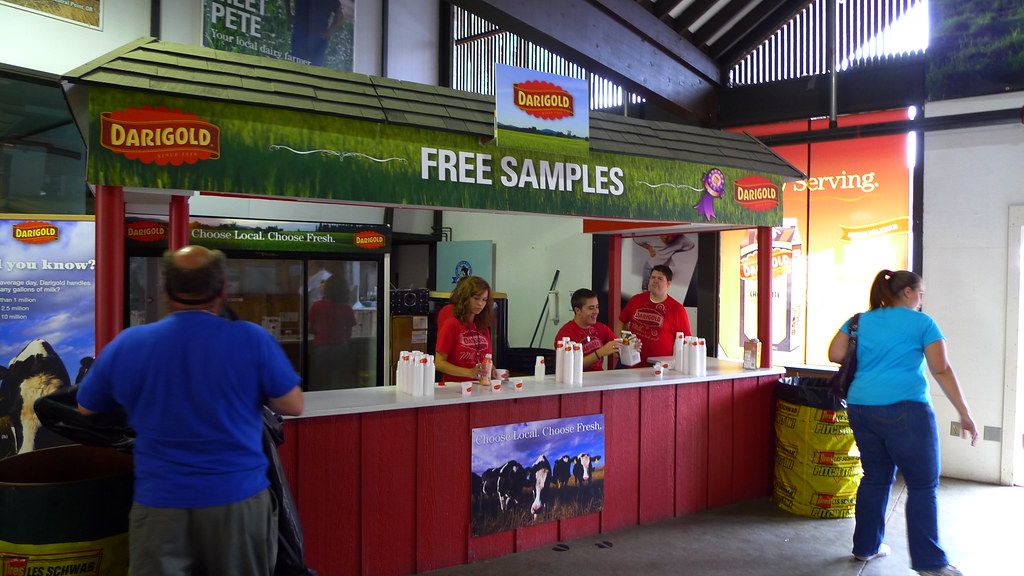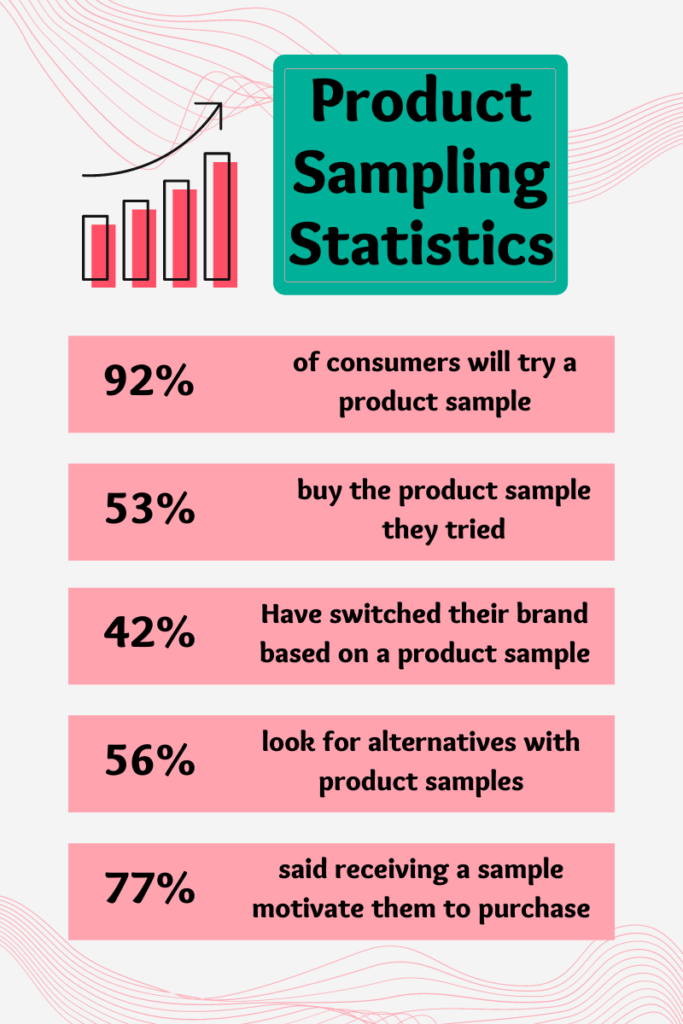Product Sampling Marketing : Strategy, Execution & Pitfalls to Avoid
As a growing business, it is essential to find new ways to establish your product’s presence in the market, drive brand awareness, and boost your sales. To stay on track and realise these goals, there’s one thing your business needs: to reach and keep customers. Product sampling marketing is a great way to bring your products and services in front of the consumers’ eyes and gain immediate feedback. In this article, we will share our best tips for product sampling marketing and how to track and measure your results with a merchandising app.
Watch a demo of Optim Merchandising App

What is consumer product sampling?
Product sampling is the strategy of handing out complimentary products as a trial run for potential consumers.
It was first championed by a stop manufacturer in the 1850s, who realised the power of handing out samples in building his fan base. Now, product demonstrations and sampling are popular across many different industries.
As the benefits of product sampling became more well-known, many businesses began to think different methods for reaching their audience with their products. Brands like “Tupperware” began to send their products directly to people’s homes, and started crafting special events that invited people to sample their products.
Recently, this strategy has moved into the digital realm, with brands targeting new customers through social media and email with e-coupons and special online-only offers.
Sampling works best for a new or improved product. It allows you to introduce the product and get feedback from consumers quickly. The technique is also effective when introducing a different use for an established product or to reach new geographic areas.
What make product sampling so effective for merchandisers and retailers?
The psychology behind sampling is simple – people love free stuff. Not only does handing out free samples lead to brand trust, but people are likely to develop a positive view of your brand as a result.
Other factors contribute to its effectiveness, including some key consumer insights:
Less Risk Aversion:
Testing out a product doesn’t require any commitment or investment from the receiver. Hence, your potential clients will be more likely to try it out. Sampling is a great way to reassure the consumer of the brand’s performance. Once people have trusted that your product or service works, they are more likely to choose your brand over a competitor the next time they need it.
More Reciprocity:
When someone is given a free sample, they’re likely to want to return the favour. By giving away free product samples, consumers are likely to make a future purchase. Plus, you can also gather immediate feedback when you give out the sample. With Optim Merchandising App, your field team can record the sample given out, testers’ feedback and their contact details. From this, you can easily send follow up emails with unique offers to those who have received the samples.
More Brand Trust:
Allowing consumers to physically experience your product creates a strong emotional bond between them and your brand.

77% of consumers said receiving a sample motivates them to purchase the item. | Source: NEOSOL
How merchandisers and retailers maximise sales with product sampling marketing
1. Sampling gives consumers the chance to experience the product quality firsthand.
Your customers do not have to rely on your sales pitch or marketing to find out about the product. They can discover it on their own, which provides a more powerful impression. It may be the most effective sales promotion technique to get a consumer to try a new product.
However, it is also one of the most expensive. Producing sample sized product and paying for the sample distribution process adds up fast. This means you have to plan your sampling campaign carefully to get the most from it.
2. Product sampling marketing campaigns provide both immediate value and long-term impact.
The perk of product sampling is that customers can make a purchase when they try the product. Your sales reps can immediately log the number of products sold during the campaign. Merchandisers and retail managers also have access to the data to know the campaign’s effectiveness. Product sampling marketing also has a long-lasting impact on sales compared to other sales promotion techniques. With a merchandising app, you can track when a customer makes a purchase, whether it’s weeks or months after the campaign ends.
3. You need to plan and execute your campaign well.
These include identifying your objective, customer, and sampling techniques. Plus, you have to figure out your approach and how you will monitor the campaign. First, though, you need to make sure that you are prepared to launch such a campaign.
4. Before you begin a campaign, you have to make sure your target market has adequate access to your product.
You must ensure there is enough product for the demand that will occur after your sampling event. If you are reaching the right consumer, they will seek your product out and be turned off if it is not immediately available to purchase. So, make sure distribution channels are ready.
Looking into the potential consumer’s conscience and unconscious reasons for using your product can help you to identify the best sampling channels, locations, or venues. This will give you the optimum environment and most solid message for your sample delivery.
Product Sampling Techniques
There are several ways for you to execute your product sampling promotions:
- Give out samples at special events, in-store or near store distribution, newspaper or magazine inserts, and direct mail.
- Samples may also come as on-pack promotions, such as a sample of toothpaste fastened to a mouthwash brand, or as near-pack promotions, such as the free sample of laundry detergent that comes with a new washing machine purchase.
- Distribute samples through a related industry partner is also effective and cost-efficient. Recently, I received a free sample off a new moisturising cream from the receptionist at the dermatologist office along with a coupon for repurchase. This is a great example of getting the product into the hands of a consumer who has a need and is in the frame of mind to appreciate its value.
Here you can find the obstacles and advantages for different product sampling marketing practices.
Direct methods: Giving out samples at retail stores or events
Advantages: This can help stores and businesses reach new customers, make their products more visible and engage their consumers through a personalised experience of the product. You can measure and track the number of samples your promoters have given out, gather feedback from the field and make immediate improvement to your campaign.
Obstacles: There is often a lot of product waste and very little targeting since samples are handed out to those who may have no real interest in this type of product. Hence, merchandising apps like Optim Merchandising can be helpful. They allow you to keep track of stocks, collect customers’ information, feedback and know who has expressed interest to follow up.
Watch a Demo of how you can do that here
Mail Delivered Sampling
Advantages: This is an effective solution that can help brands ship samples both locally and internationally to reach a wider range of consumers.
Obstacles: You won’t be able to know their feedback, and it can be hard to measure the effectiveness of the campaign. If you see an increase in sales, is it because of the sampling promotion or another marketing activity?
Online influencers sampling
Advantages: This is an effective solution as influencers help build unique relationships between their followers and your brand. This method can also help your business reach a larger audience while achieving better brand awareness.
Obstacles: Using brand influencers makes measuring ROI remarkably difficult. This product sampling marketing method also falls short in the way that little insight or feedback is received from consumers as there is no direct interaction between the business and the user post-testing.
Start your campaign
Now that you have a good idea about the various things you need to do to prepare for a product sampling campaign, you are ready to get started. Make sure to choose the right tactic that meets your objectives and find a way to measure your ROI. Taking the time to plan out your campaign before getting started is going to be the most beneficial thing you could do to ensure success.
Watch a demo of Optim Merchandising App and get a free trial.




